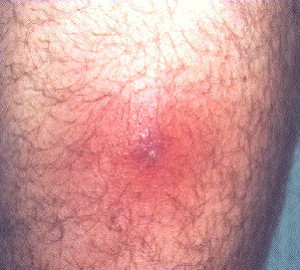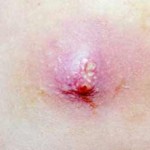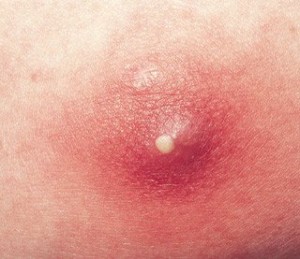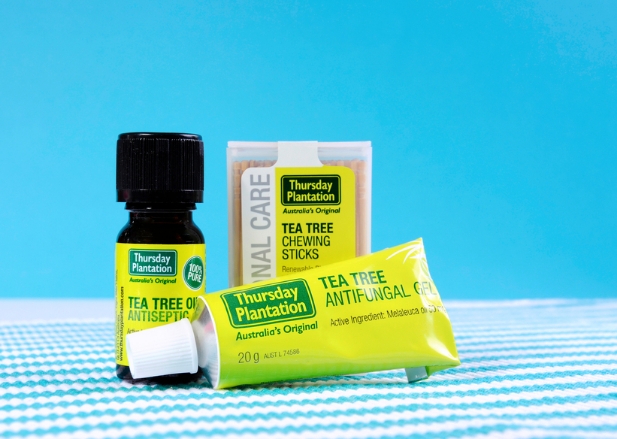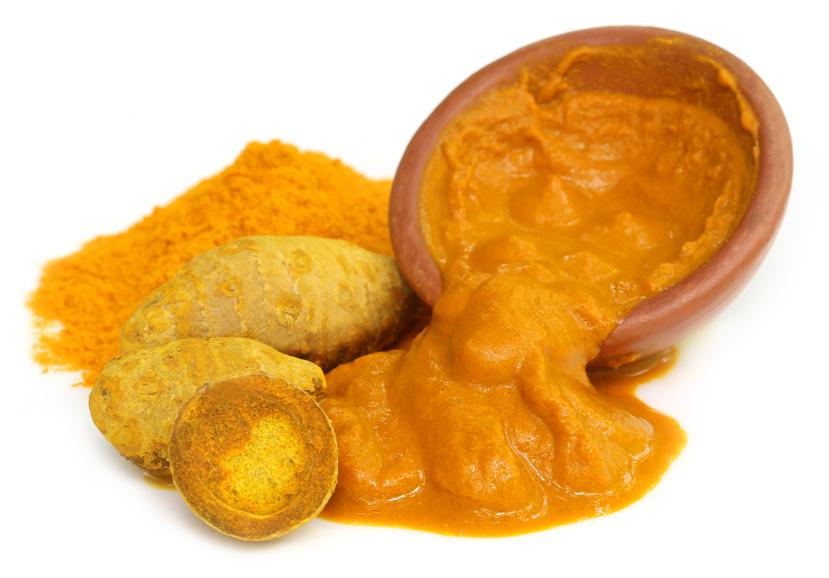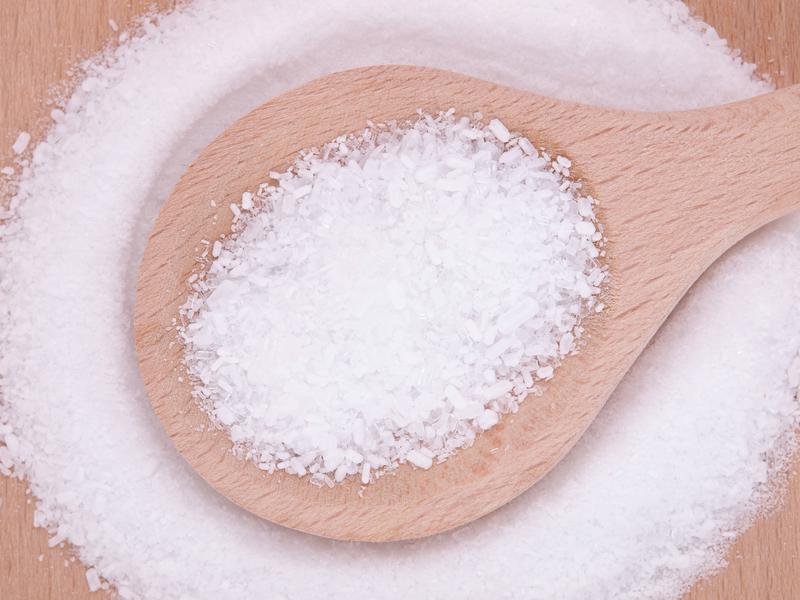Boils On Inner Thigh – Pictures, Causes, Treatment and Home Remedies
The following are some natural ways to get rid of cysts and boils on the inner thigh at home.
Everything You Should Know About Boils on the Inner Thigh
A boil is a painful, pus-filled bump that can develop on the surface of your skin. A boil is also called a furuncle. Larger ones are called abscesses. A boil on your eyelid is called a stye.
A boil is often caused by an infection within a hair follicle or oil gland. They’re usually caused by staph bacteria, which are naturally present on your skin. Boils can develop anywhere on your body, but are commonly found in places on the body where there is friction. They’re most likely to occur on your neck, breasts, face, armpits, buttocks, or thighs.
According to a 2012 review article , boils are becoming more common in the United States. This increase has been linked to the increase of methicillin-resistant Staphylococcus aureus (MRSA) bacteria. The bacteria normally found on your skin and inside your nose can become resistant to many types of antibiotics. Infections with these bacteria can become serious and difficult to treat.
Boils typically begin as small red bumps that itch or hurt. Over a few days, a boil will swell as it fills with bacterial pus. It will typically develop a whitish-colored tip that breaks open, allowing the pus drain out. The boil may then crust over.
If your boil becomes larger or if the infection spreads, you might have other symptoms. These include a general ill feeling, fatigue, or fever.
In studies, the artificial intelligence (AI) technology used in some online health services for preliminary screening before connecting patients with a doctor actually outperformed real physicians in terms of reaching an accurate diagnosis, CNN AI technology correctly diagnosed conditions in 81% of patients, compared to a 72% average for accurate diagnoses among real physicians over a five-year period.
Not all red bumps on your skin are boils. Examples of skin conditions that can look like boils include:
Bacteria that are normally present on your skin can infect a hair follicle and inflame the surrounding area, causing a boil to form. Often bacteria get trapped in a hair follicle or oil gland due to friction or trauma to the skin.
Inner thighs are a common site for boils because your thighs can rub against each other and get sweaty, especially in hot and humid weather. This encourages bacteria to grow within the follicles.
Anyone can get boils. You can be healthy and have boils. But some conditions make you more susceptible. For example:
- If you have eczema or psoriasis, you may have skin scratches or sores that can become infected.
- If your immune system is compromised, you may be more likely to develop an infection.
- If you have diabetes, it may be harder for you to fight off infection.
- If you live or work with someone else who has a boil, you’re more likely to develop one.
- If you’re obese, you may be more likely to get boils.
Most boils clear up on their own within a week or so, without complications. But if you have a boil on your inner thigh or other body part that lingers, becomes larger and more painful, or comes back, you should see a doctor.
Serious symptoms
Small boils typically do not cause symptoms to other parts of your body. However, if the infection spreads, it can become serious. You may notice:
- body aches
- fever
- chills
- feeling poorly overall
Any of these symptoms require immediate medical attention. This is because skin infections that are left untreated can spread to the blood stream and become life-threatening.
Large boils
If the boil becomes large enough and doesn’t drain on its own, your doctor may perform a procedure in the office. It’s called an incision and drainage, or I&D. They will make a small nick in the boil to drain the pus. They’ll also usually send a sample of the pus to a laboratory.
Lab technicians can help identify the particular bacteria causing your infection. This can help your doctor decide which antibiotics are best for treatment, if needed. Depending on the size, location, and other symptoms of your boil, draining it may be enough to cure the infection. Antibiotics are only used for large infections and in certain situations.
Recurring boils
If your boil recurs frequently, or if you develop complications, your doctor may refer you to a skin disease specialist, also known as a dermatologist. Or they may refer you to an infectious disease specialist.
In many cases, you may be able to treat your boil at home. If home treatment doesn’t work, your doctor may prescribe other treatments.
At home
It’s important not to squeeze or pop a boil yourself. Doing so can spread the bacteria inside to deeper parts of your skin. Instead, apply a warm compress regularly throughout the day, which will help the boil drain on its own.
The American Academy of Dermatology (AAD) recommends applying a warm compress for 10 to 15 minutes 3 to 4 times a day until the boil heals. You can make a warm compress by soaking a clean washcloth in hot water. Make sure the water isn’t too hot.
If the boil is draining or in an area of friction, you should apply a clean bandage. This can limit the irritation. It’s hard to avoid friction in your inner thighs, but you may want to wear loose underwear and clothing to avoid aggravating the boil.
The AAD suggests taking ibuprofen or acetaminophen to relieve pain caused by your boil, if needed.
At the doctor’s office
If your doctor can’t perform an incision and drainage in the office due to the boil’s location or size, you may need to see a surgeon. In some cases, after the boil is drained gauze is used to pack the wound. If this occurs, you will likely need to return to your doctor daily to change the gauze.
For larger infections and abscesses, your doctor may order an ultrasound image of the area. This is to make sure the pus has been fully drained. They may also order an ultrasound if they suspect you have a boil under your skin that’s not visible on the surface.
Your doctor may prescribe antibiotics by mouth. More serious infections may require hospitalization and intravenous antibiotics.
If you squeeze or prick your boil, you can spread the infection to other parts of your skin. If the infection spreads, the boil can grow larger and become an abscess. This is a deep pocket of pus that can be as big as a grapefruit. An abscess requires urgent medical attention.
Sometimes, other boils will erupt around the first one. A grouping of boils is called a carbuncle. Carbuncles are more painful. They are more likely to cause serious symptoms and leave a scar.
If the infection spreads, there is a chance that the bacteria can enter your bloodstream and infect other parts of your body, including your heart, bones, and brain.
In most cases, though, boils heal without complications.
Your boil should typically clear up within one week or so of home treatment.
When you have a boil, it’s important to practice good hygiene. This can help prevent the spread of infection to other parts of your body and to other people. For example:
- Don’t share personal items, like razors, that might have come in contact with an infection.
- Wash towels, compresses, and any clothing that may have come in contact with a boil. Use soap, hot water, and a hot dryer to launder them and kill any bacteria.
- If the boil is draining, keep the wound covered with a dry bandage until it heals. You may want to use a wide bandage around your thigh to decrease irritation from chafing.
- Change the bandages regularly to keep the boil clean and dry.
- Wash your hands frequently and thoroughly.
Last medically reviewed on March 15, 2017
How we reviewed this article:
Healthline has strict sourcing guidelines and relies on peer-reviewed studies, academic research institutions, and medical associations. We avoid using tertiary references. You can learn more about how we ensure our content is accurate and current by reading our editorial policy.
- Demos, M., McLeod, M. P., & Nouri, K. (2012, October). Recurrent furunculosis: A review of the literature. [Abstract]. British Journal of Dermatology, 167(4), 725-732
ncbi.nlm.nih.gov/pubmed/22803835 - Dhar, A. D. ( 2013, May). Cutaneous abscess
merckmanuals.com/professional/dermatologic-disorders/bacterial-skin-infections/cutaneous-abscess - Dhar, A. D. (2013, May). Furuncles and carbuncles
merckmanuals.com/professional/dermatologic-disorders/bacterial-skin-infections/furuncles-and-carbuncles - How to treat boils and styes. (n.d.)
aad.org/public/skin-hair-nails/skin-care/boils-and-styes - Mayo Clinic Staff. (2016, July 13.) Boils and carbuncles
mayoclinic.org/diseases-conditions/boils-and-carbuncles/home/ovc-20214754 - Scheinfeld, N. S. (2004, July). Obesity and dermatology [Abstract]. Clinical Dermatology, 22(4), 303-309
ncbi.nlm.nih.gov/pubmed/15475230?dopt=Abstract - Singer, A. J., & Talan, D. A. (2014, March 13). Management of skin abscesses in the era of methicillin-resistant staphylococcus aureus. New England Journal of Medicine, 370(11), 1039-1047. Retrieved from
medicine.case.edu/images/current_residents/management of skin abscesses in the era of mrsa.pdf
Boils On Inner Thigh – Pictures, Causes, Treatment and Home Remedies
Are you suffering from reddish, swollen localized bumps on your inner thigh? You are probably having boils on inner thigh. Read on and know all about the causes, symptoms, diagnosis and treatment of boils on inner thigh.
What Are Boils?
- 1 What Are Boils?
- 2 Boils On Inner Thigh
- 3 Boils On Inner Thigh Symptoms
- 4 Boils On Inner Thigh With Blood
- 5 Causes of Boils On Inner Thigh
- 6 Inner Thigh Boil Diagnosis
- 7 How To Treat A Boil On Inner Thigh?
- 8 Home Remedies for Boils On Inner Thigh
- 9 Boils On Inner Thigh Natural Remedies
- 10 Boils On Inner Thigh Cure Through Herbs
- 11 How To Get Rid Of Boils On Inner Thigh Recurrence?
- 12 Boils On Inner Thigh Pictures
Boils are localized skin infection that appears as red, raised bumps and may arise anywhere over the skin. There are two kinds of boils, Furuncles and Carbuncles. A small-sized, single boil arising on a localized skin area is known as Furuncle or “Deep Follucilitis”. A cluster of similar but larger boils are called Carbuncles. Carbuncles are also deeper and generally have multiple heads at their tip. These take a long time to go away and leave scars even after healing.
Boils On Inner Thigh
Picture 1 – Boils On Inner Thigh
Source – patient.co.uk
Boils arising on inner thigh are small in shape and red in color. These are inflamed and may turn out to be pustules in later stages. These may arise either singly or in multiples. An individual may suffer from furuncles or carbuncles on the inner thigh.
Boils On Inner Thigh Symptoms
Inner thigh boils arise as red, tender lumps on a localized region of skin. The lump and its surrounding region feel sore and painful to touch. These also feel hot when touched.
With time, these start to get hardened. Pus accumulates inside them and the pustules develop a white head at the center. The abscess or abscesses get more and more enlarged in size until they becomes extremely painful and rupture to drain pus. Most people have their boils on inner thigh paining from the middle stages itself. The pain subsides once the boil drains completely. The region heals with each passing week and recovers completely after a month or two.
Larger boils or carbuncles can leave a scar at the site of their growth even after complete healing.
Boils On Inner Thigh With Blood
Some patients suffer from boils on inner thigh filled with blood. In case of boils on inner thigh blood is bright red in color and is mixed with pus. This is not something to worry about. Most boils drain blood along with pus due to the accumulation of a few red blood cells.
Causes of Boils On Inner Thigh
Wondering “Why do I get boils on my inner thigh”? Inner thigh boils are usually caused by an infection by the bacteria Staphylococcus Aureus. This type of bacteria is generally harmless and resides inside many people without producing any symptoms until they start affecting the deeper tissues. Other than inner thighs, Staphylococcus Aureus boils are seen in various other parts of the body like throat, face, groin, buttocks and armpits.
The Staphylococcus Aureus bacteria generally enter the body through open cuts and injuries on the skin surface. In some cases, the microbes can settle on a strand of hair and enter the skin through the follicle. An ingrown hair or a damaged follicle can also be a causative factor behind inner thigh boils.
In some people, blockage and infection of the sweat glands can also give rise to boils on the skin surface. Poor hygiene, bad nutrition, skin contact with strong chemicals and weak immunity are other major boils on inner thigh causes. For sufferers of boils on inner thigh diabetes is also a causative condition. Diabetes leads to weakened immunity which makes individuals more susceptible to bacterial infection.
Inner Thigh Boil Diagnosis
In case of boils on inner thigh diagnosis is usually done by physical observation. In a few cases, doctors may recommend carrying out blood tests or skin biopsies to distinguish the condition from other diseases that produce similar symptoms.
How To Treat A Boil On Inner Thigh?
Inner thigh boils usually require no treatment. Boils generally develop a head after a few days and rupture, releasing pus. Once pus is completely released, boils start reducing in size and go away after a point of time. But in some cases, the pain refuses to go away and may cause fever in sufferers. It is necessary to seek immediate medical treatment in such cases.
For people suffering from boils on inner thigh treatment depends on the cause. In case of boils arising due to bacterial infection, the nature and degree of infection should have to be judged during treatment.
Minor boils generally do not require anything more than pain relievers and home remedies. Medical treatment for boils on inner thighs is necessary in case of large, persistent bumps. A combination of over-the-counter analgesics (pain-reliever drugs) and antibiotics are needed to treat infection in such cases. In case of a serious infection resulting in boils on inner thigh antibiotics that are typically prescribed include Dicloxacillin (Dynapen) and Cephalexin (Keflex). Using antibiotic creams to regularly wash the boils for some days may also help them subside faster.
Some patients are found to suffer from allergy due to penicillin-based medications. For such people, Erythromycins are usually prescribed.
A severe bacterial infection gives rise to very painful and large boil on inner thigh. A small surgery is often recommended to drain the cysts in such cases.
Home Remedies for Boils On Inner Thigh
A small lump on inner thigh can be cured at home. For people suffering from minor boils on inner thigh home remedy involves :
Warm Compress
Take a dry cloth and warm it slightly over an electric iron. Press this over the boils. Applying heat over the boils increases circulation around them thus helping pus drain more quickly. Do this 2-3 times a day. You will notice inflammation subside in a few days. This is one of the best home remedies for boils on inner thigh.
Applying Turmeric Paste
Make a paste of turmeric, castor oil, mils, honey, Epsom Salt and iodine. Apply this over the boils to make them develop a head more quickly. Once the white head is formed and the pus is released from within use an anti-bacterial or anti-fungal agent to clean the region.
Making Dietary Modifications
Avoid excess of fried, spicy and oily foods. Keeping caffeinated and alcoholic beverages and red meat to a minimum is also necessary. These heat up the body and can give rise to boils. Avoiding such foods and drinks at home will help you recover faster from boils.
Boils On Inner Thigh Natural Remedies
Know about some of the popular natural boils on inner thigh remedies.
Turmeric Powder
Pour 1-2 tsp of turmeric into a glass of boiling milk and drink the mixture. Do this 2-3 times a day. Turmeric has anti-inflammatory properties that make it suitable for shrinking of boils. A paste made of milk cream, vinegar and turmeric is also effective in curing red, swollen boils. Turmeric also has anti-bacterial properties which make it effective to combat boils on inner thigh infection.
Water
Drink around 8-9 glasses of water every day. Water helps flush out toxins from the system through sweat and urine. This reduces toxin levels in the system and helps reduce boils much faster.
Inner thigh boils may also be cured by the application of Aloe Vera Gel, Onion Juice, Garlic, Castor Oil and Tea Tree Oil.
Boils On Inner Thigh Cure Through Herbs
Inner thigh boils can also be cured with the aid of herbs. Know about some of the popular herbs used for lumps on inner thighs.
Goldenseal
Mix Goldenseal root powder with hot water and apply the paste over boils. This herb has strong anti-bacterial properties that make it effective in fighting off bacterial infection and naturally curing thigh boils.
Calendula
Direct application of calendula over boils, either in herbal or in diluted form, can effectively reduce inflammation and pain in boils.
Flaxseed
Ground a small amount of Flaxseed herb to a pulp. Apply this as a poultice over boils. It helps form a head over the tip of boils much faster.
Hepar Sulphuris Calcareum
Hepar Sulphuris Calcareum can provide faster relief in tender boils. Naturally, many herbalists recommend it as a powerful boil cure.
Burdock Roots
Burdock Root works as a natural antibiotic which makes it appropriate in treating bacterial infections. Quite naturally, the herb is recognized as a powerful cure for boils by many people.
Echinacea
This popular perennial herb is North American in origin and is still recommended to people who suffer from boils due to a low immune system. The herbaceous plant boosts the immune system and purifies the lymph glands of the body.
How To Get Rid Of Boils On Inner Thigh Recurrence?
Some people have boils on inner thigh recurring even after treatment. It is necessary to consult a doctor in case of a recurrence. Recurring inner thigh boils may be a sign of weakened immunity which makes the individual suffer from the problem again and again. It may also be the indication of some other condition such as a Staph Infection or Bullous Pemphigoid.
People with low immunity often suffer from Bullous Pemphigoid which gives rise to recurring boils on the skin. Proper diagnosis helps in fast treatment of these conditions.
Boils On Inner Thigh Pictures
Want to know how inner thigh boils look like? Here are some boils on inner thigh pics that will give you a visual idea about the appearance of these skin abscesses.
Picture 2 – Boils On Inner Thigh Image
Source – bryanking.net
Picture 3 – Boils On Inner Thigh Photo
Source – shrisharmadrugstore.com
Boils on inner thigh are not dangerous to health. But they can be extremely discomforting and cause a lot of pain and embarrassment. If you are suffering from inner thigh boils or have a dear one suffering from the condition, try home remedies. Call up a doctor if the symptoms refuse to subside even after a few days. Early treatment, as stressed again and again, can help in faster recovery and prevent a lot of future complications.
References:
Cysts on Inner Thigh: Causes and Home Remedies
Disclaimer: Results are not guaranteed*** and may vary from person to person***.
You might not think that you could develop a cyst on the inner thigh, but it happens.
An inner thigh cyst can be uncomfortable because of the related pain, sheer size (they can grow quite large), and the close-to-the-groin location.
Unlike acne, an inner thigh boil can take weeks to heal; often, they don’t go away for good but lie dormant and then reappear.
Apart from the pain that can occur with this condition, it can also be unsightly and embarrassing.
If inner thigh bumps appear and tend to reappear, it’s best to see a doctor as soon as possible to begin treatment; boils between the thighs can grow further into the skin and become even more painful.
In this article:
- Why Are There Bumps or Cyst on My Inner Thigh?
- Other Possible Reasons for a Cyst on the Inner Thigh, Near the Groin
- The Difference between a Cyst and Boil
- How to Get Rid of a Cyst or Boil on Inner Thigh
- Managing Boil on Inner Thigh
What Causes Bumps or Cyst on Inner Thigh?
There are a number of reasons for boils on the inner thigh. The first is hidradenitis suppurativa (HS) (1), which is a disease that starts as pimple-like bumps on the skin that form where pimples typically don’t appear: the underarms and groin.
A cyst on the inner thigh filled with blood is typical of HS, and should be looked at by a doctor. In the meantime, be sure to keep it clean so it doesn’t get infected.
Use peroxide, witch hazel, or rubbing alcohol on a cotton pad to clean the area three times a day.
Hair follicles can become blocked and cysts and boils can develop as a result.
Cysts on the inner thigh near the groin in females happen most often because of shaving and waxing.
When hair is pulled or cut at the root, it sometimes curls into itself when it regrows, which means that it’s stuck under the skin and skin cells form layers on top of it.
This ingrown hair irritates the area and can form boils or cysts. Some people are more susceptible to this condition than others.
Boils occur as a result of an infection around a hair follicle. They are common and are most often caused by the Staphylococcus aureus bacteria, the most common bacteria found on the skin.
A staph infection on the inner thigh can cause a boil to appear, and become red, irritated, and painful. A doctor will need to look at it to determine if a prescription is required or if home care will suffice.
If the boil is red, painful, contains pus, and the skin surrounding it is warm and painful to the touch, please see a doctor to determine if there is an infection.
Other Possible Causes for a Cyst on the Inner Thigh or Near the Groin
Aside from the above, there are a few more reasons why there might be a bump on the inner thigh:
Jock itch:
This is a fungal infection that occurs mostly in men around the groin, but can spread to the thighs if not treated. It usually looks like a rash with small red bumps that are very itchy.
If you’re a male with a cyst on the inner thigh, it’s probably not jock itch, so you can likely rule that out.
Tumor:
In rare cases, a bump on the inner thigh can be a tumor. These bumps grow under the skin and do not present on the surface.
If you notice them spreading quickly, it could mean that the tumor has metastasized, so see a doctor as soon as possible.
Folliculitis:
Much like HS, this condition involves hair follicles which become inflamed as a result of bacteria. It typically presents with itching, painful boils on the inner thigh.
Cysts on the inner thigh of females are common with folliculitis because of ingrown hairs on the inner thigh.
Abscesses:
An abscess on the inner thigh can be caused by the S. aureus bacteria. It can result in pain, swelling, warmth in the area, redness, and cysts.
Warts:
Dry, red bumps that feel scaly could be warts. See a doctor for treatment, which may include freezing the warts to remove them permanently.
The Difference between a Cyst and Boil
A cyst and a boil (also called a furuncle) look and feel very much the same, except a boil can grow larger and become extremely painful.
A boil is usually caused by a staph infection which can result in a fever, whereas a cyst can also be caused by an infection but also by ingrown hairs.
The pus in a boil can accumulate massively, so if this happens the fluid will need to be removed by a healthcare practitioner.
It’s best not to pop boils on your own, especially if they are extremely large—a serious infection can ensue if it isn’t done correctly or in very sterile conditions.
How to Get Rid of a Cyst or Boil on Inner Thigh
The following are some natural ways to get rid of cysts and boils on the inner thigh at home.
1. Tea Tree Oil
Tea tree oil is an excellent antibacterial.
Tea tree oil is an excellent antibacterial. It might sting and has a strong scent, but it will shrink boils, cysts, and pimples, and will help prevent infection.
Take a cotton pad or a makeup pad and add a few drops of tea tree oil to it, then dab on the bumps three times a day.
Be sure to wash your hands after using the oil so you don’t accidentally transfer any from your fingers to your eyes, because this stuff burns.
If you have a cyst on the inner thigh crease, make sure to not get any tea tree oil on or near the genitals, again, because it stings.
If this happens, wash the area thoroughly with soap and water and attempt the process again with more care.
2. Turmeric Paste
Turmeric has antibacterial and antiseptic properties.
Turmeric has antibacterial and antiseptic properties, so it’s perfect for boils, cysts, and pimples. Because it’s a powder, you will need to make a paste by adding water to it.
Once the paste is made, apply it directly to the affected areas and leave it on for as long as is reasonable, then wipe it off with a warm cloth.
Be aware that it might leave a yellow stain on the skin, but this will fade after a few days.
3. Epsom Salts
Epsom salts are great at healing boils by getting them to drain faster.
Epsom salts are great at healing boils by getting them to drain faster. You will need to soak in a warm tub of water with about a half cup of salts dissolved into it. Do this twice a day if possible; otherwise, once a day is good.
Managing Boil on Inner Thigh
If you’re sure that you simply have a pimple on the inner thigh, then treatment will be similar to what you would do for your face.
Over-the-counter acne creams will work well here, as would a paste of baking soda and apple cider vinegar to dry out the pimples and reduce the chances of getting an infection. Keep the area clean and dry.
If the thigh acne does not go away from self-treatment, see a doctor to discuss other possible treatments, such as medications and creams that help prevent acne from developing in the first place.
But also consider things such as the laundry detergent or soap you use, and materials worn against your skin. All of these can be irritants and could potentially cause pimples.
Also Read:
- What Is Cystitis? What Causes it and How Is it Treated?
- Inner Thigh Pain: Possible Causes and Treatments

